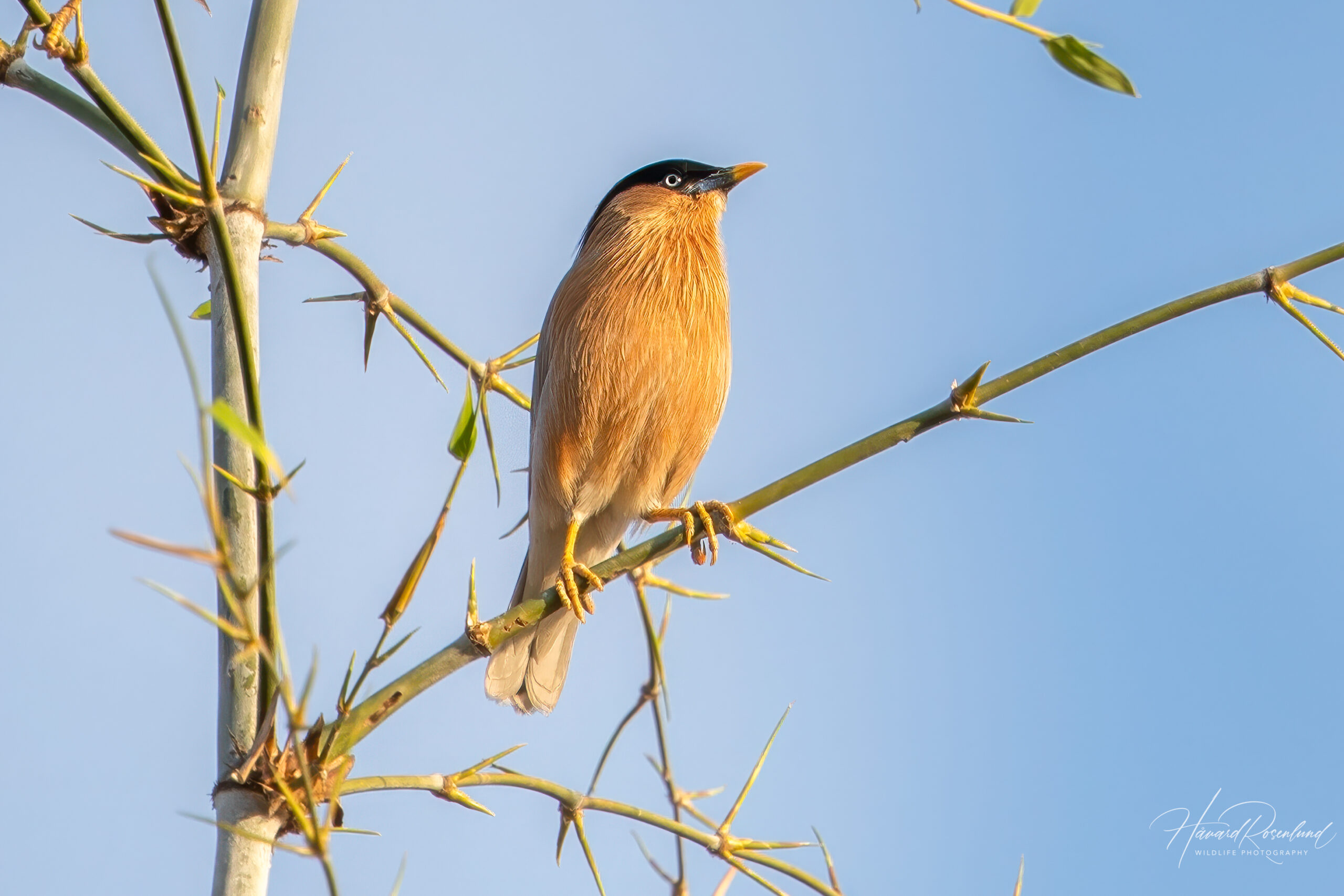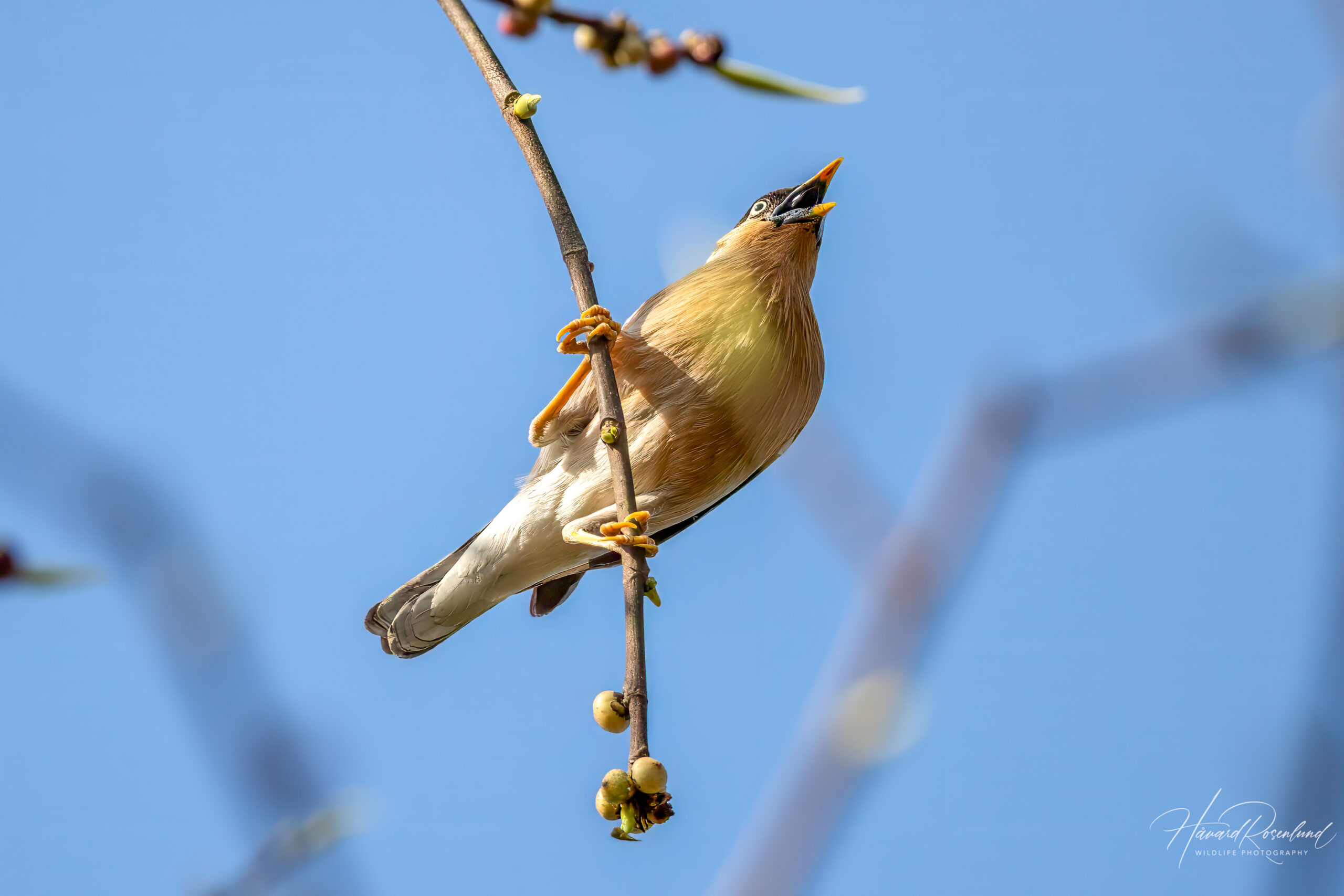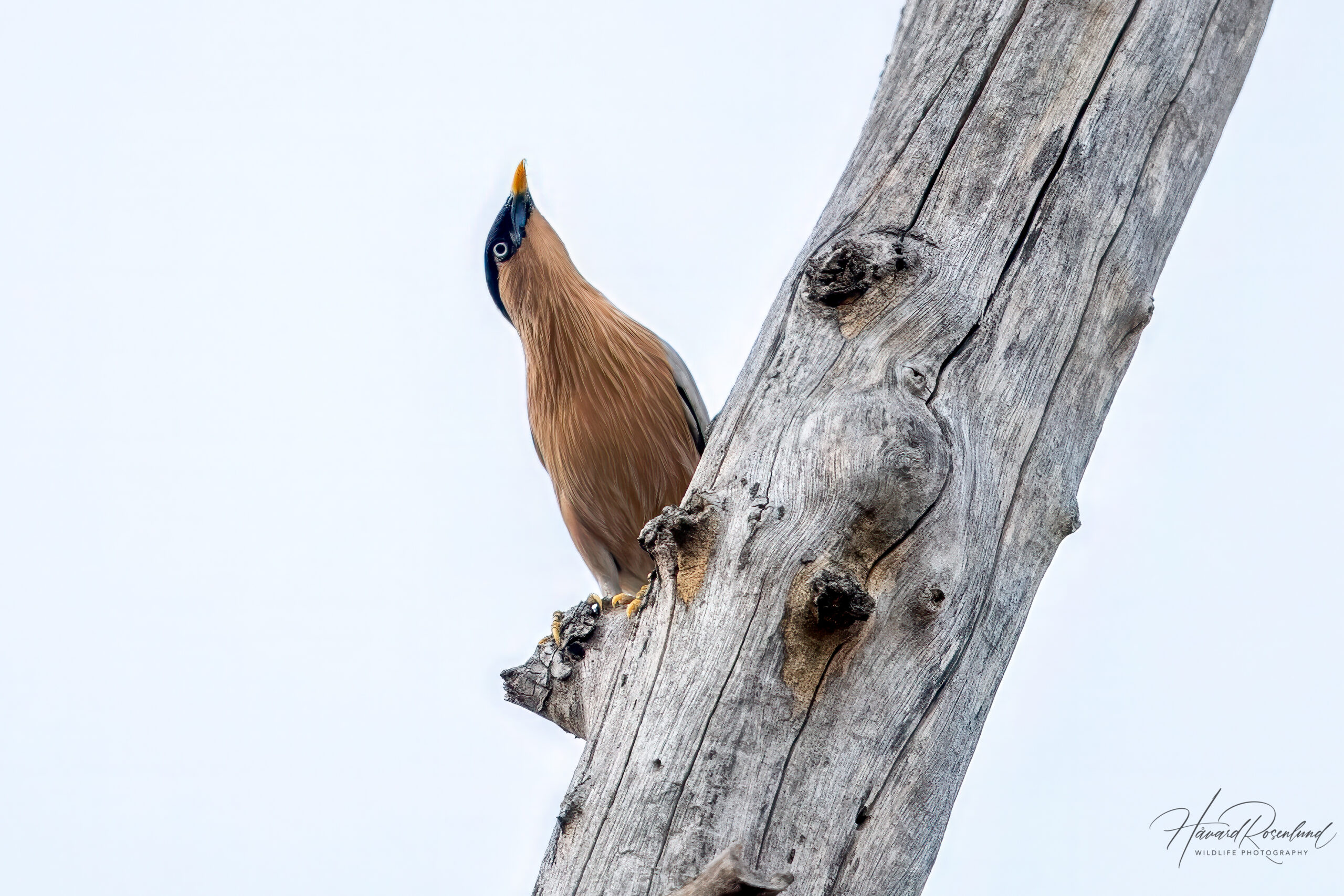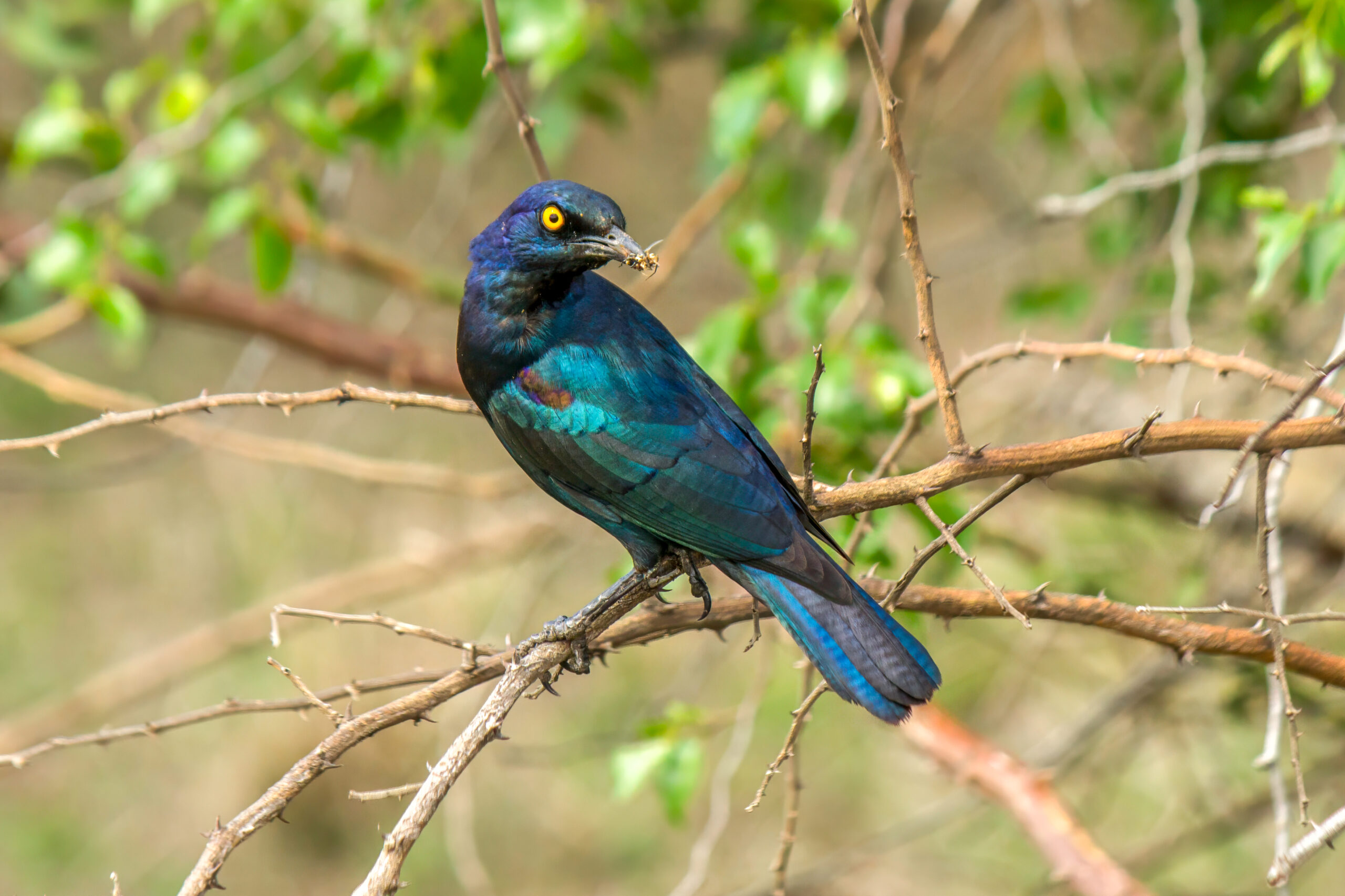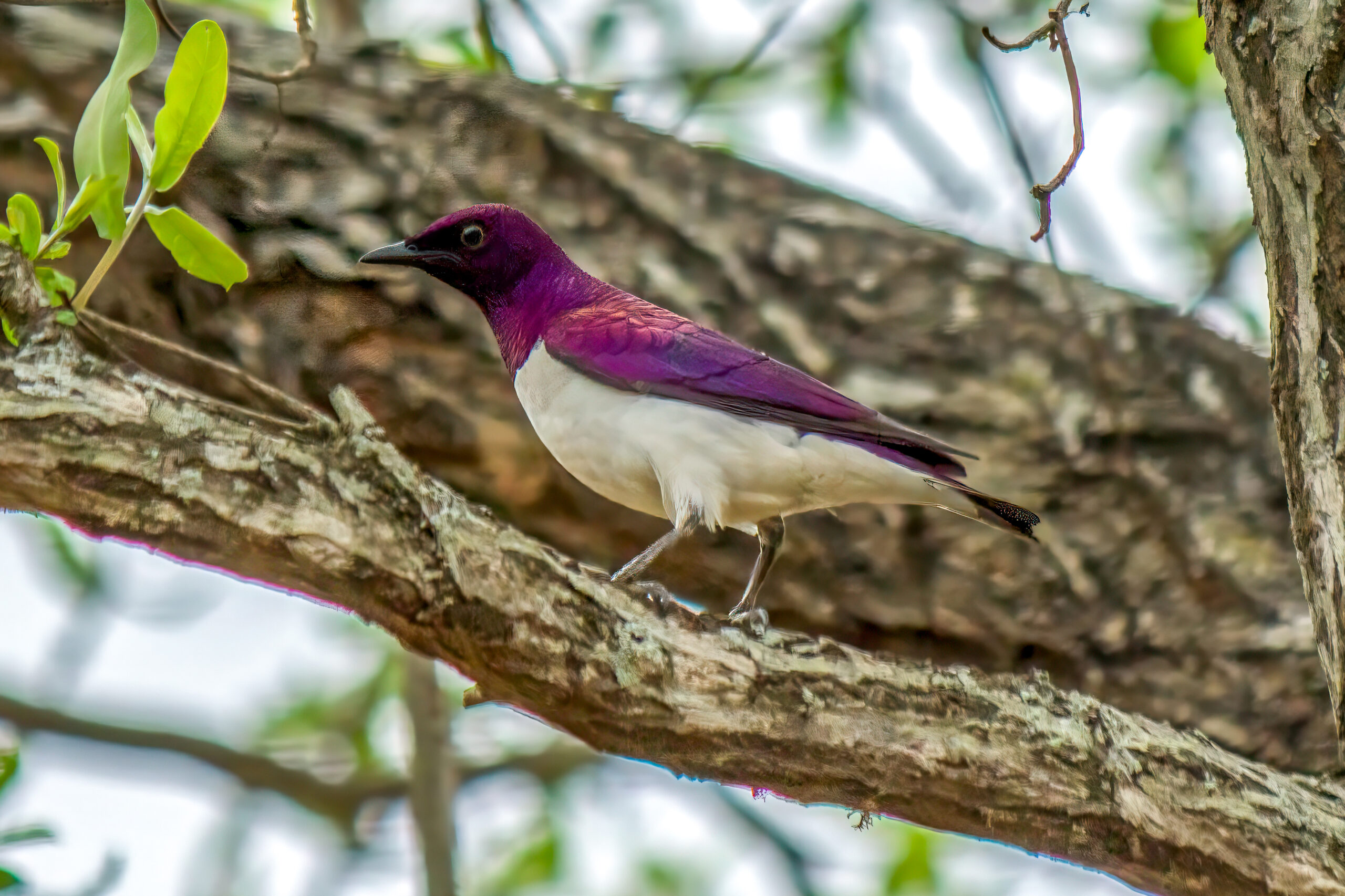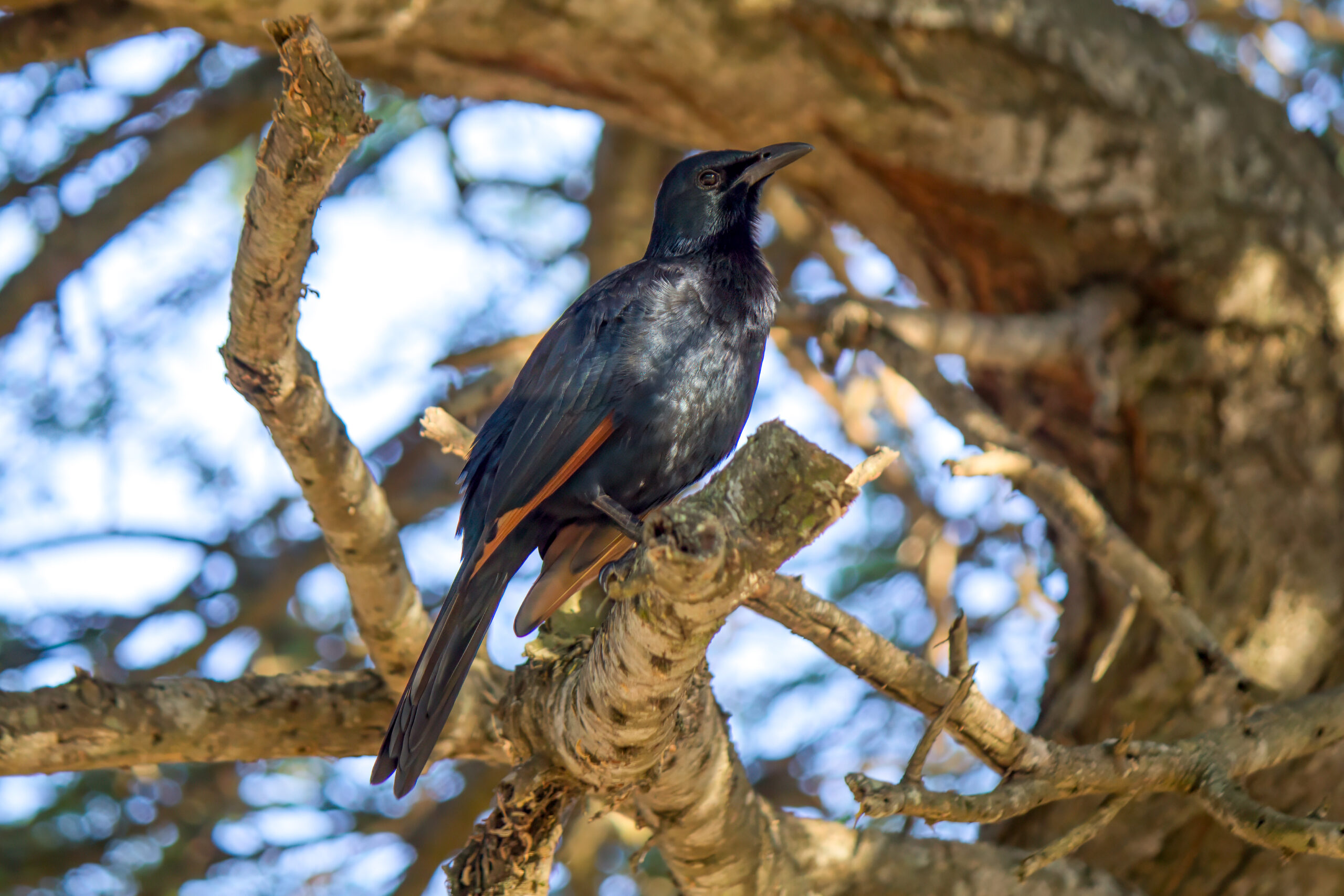Brahminy Starling
(Sturnia pagodarum)
Description
The brahminy starling (Sturnia pagodarum) is a striking member of the starling family primarily found across the Indian subcontinent, with an introduced populations in the United Arab Emirates. This medium-sized bird, measuring between 19-22 cm (7.5-8.7 in) in length, has a distinct black cap, cinnamon body, and grey back and wings. It has a blue and yellow bill and yellow legs. The brahminy starling can be distinguished from most other starlings by its unique combination of colors and a slightly crested head. These are highly social birds, frequently forming mixed-species flocks with other starlings and mynas, especially outside the breeding season. Their name, “brahminy,” is derived from the brahmins of India, referring to the bird’s colors, reminiscent of a typical attire of a brahmin priest.
Diet & habitat
Brahminy starlings are versatile in their habitat preferences, thriving in open forests, agricultural areas, and even urban environments. They show a particular preference for waterlogged areas. Their diet is equally adaptable, consisting mainly of fruits, nectar, and insects, which they forage for on the ground or in foliage. Their feeding habits include a mix of solitary and group foraging, indicating a complex social structure.
Nesting
Breeding season for the brahminy starling varies regionally but generally falls between March and September. They exhibit monogamous pair bonds. They typically utilize natural cavities in trees or abandoned nests of other birds for their nests, but they can also use holes in artificial structures, such as houses and nest boxes. The female lays 2-5 eggs per clutch, which both parents incubate. The incubation period lasts about 12-15 days, with fledglings becoming independent approximately 21 days after hatching. They often have two broods per season, occasionally three.
Status
The brahminy starling is currently listed as least concern on the IUCN Red List, thanks to its wide distribution and large, stable population. While not facing any immediate threats, habitat loss and degradation could pose challenges in the future.




